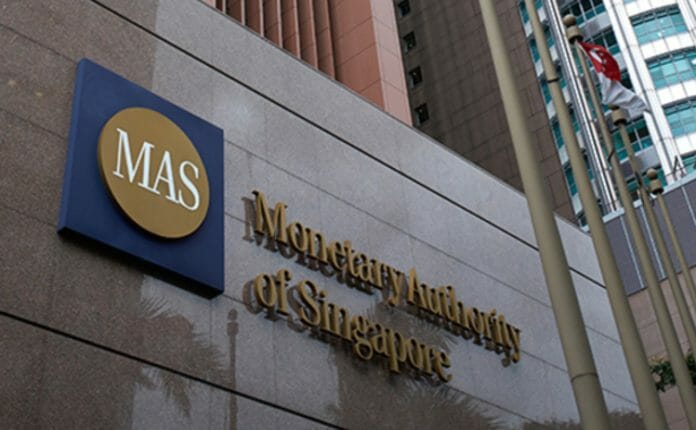According to Maybank in its review of Singapore’s economy and what the Monetary Authority of Singapore’s next move will be, the investment bank said that based on its baseline scenario, the house expects MAS to remain focused on inflation and maintain the prevailing rate of S$NEER appreciation at the mid-October meeting. But with growth stagnating, inflation easing
from its highs and 3Q GDP growth forecasted at a weak +0.1% – it cannot rule out the MAS surprising with a “slight” easing and reducing the slope of the appreciation bias. The house would ascribe a 20% probability to the MAS surprising with a “slight” easing move. And expect no change to the width or center of the band.
The government will do the heavy lifting to support growth, if the economy stagnates or contracts. There is ample fiscal space to deploy additional support, given strong revenue growth that will likely exceed MOF’s projections in FY23/24. The government recently announced the Majulah Package (S$7bn) and Cost-of-Living Support Package (S$1.1bn), which included a S$800mn top-up to the S$9.6bn GST Assurance Package. The generous handouts come despite fiscal constraints from the balanced budget rule over the term of government.
The S$NEER is trading at around +1.7% above the implied mid-point, or the upper half of the band by estimates. Maybank expects 3M SORA to peak at 3.8% by year-end (vs. current 3.7%) and decline to 3.2% by end2024, predicated on 100bps of Fed rate cuts in the second half of 2024. Tightening monetary conditions and rising interest rates are dampening loan demand. System-wide loans (-6% in Aug) have been contracting since Nov 2022, led by business loans.
Inflation Easing But Price Pressures Reemerging
Both headline and core inflation have been easing over the year to +4% and +3.4% respectively in August. The house forecast 2024 average core inflation at +2.8%, and headline inflation at +2.9%. It sees core inflation tapering to about +3% by year-end with declining import prices and cooling services costs, but inflation may be sticky downward and pick up in 2024. The commodity price downward adjustment has largely run its course, with oil and food prices rebounding in recent months.
Although global food prices remain 24% below their March 2022 peak, El Nino and climate change are disrupting agricultural output and fueling a broader increase in food costs. The 1% GST hike and a fivefold increase in the carbon tax rate (to S$25 from S$5) on 1 Jan 2024 could have direct and second-round effects on consumer and business costs. Wage pressures will be sustained by mandated hikes under the Progressive Wage Model; higher S Pass and Employment Pass qualifying salaries; and a higher wage ceiling for CPF contributions from 1 Sep 2023. Labour market remains tight with low unemployment and high
vacancies, with job prospects improving. Rising private transport costs will add to headline inflation, with higher COE prices, ERP rates, and fuel costs. Accommodation inflation may ease with slowing rental growth and higher housing supply.
Expect Weak Manufacturing & Export Recovery in 4Q
Flash 3Q GDP estimates will likely show the economy stagnating, coming in at a weak +0.1% YoY in 3Q (vs. +0.5% in 2Q). This implies positive but weak QoQ SA growth. Manufacturing (-6.6% in Jul-Aug) remains in contraction due to tepid external demand, although the slump could narrow from 2Q amid more upbeat business expectations. Both manufacturing and exports should recover more discernibly from the fourth quarter. Bottoming global electronics demand, a US manufacturing investment boom, and a gradual rundown of China’s elevated industrial inventories should help shore up exports. Construction will remain robust with the return of foreign workers and the strong pipeline of HDB projects amid a housing shortage.
Services growth will ease but remain resilient, as professional and trade-related services pick up to offset normalising growth in “revenge spending” sectors. Recovering tourist flows with global-scale entertainment events and China’s early-Oct golden week will support retail, accommodation, and F&B. Trade-related services (wholesale trade and water transport) will be boosted by a pickup in regional trade volumes, as seen by an upturn in container throughput and sea cargo from 2Q. Finance and real estate may see weaker activity, with a persistent decline in loan demand and lower property transactions due
to declining affordability.









